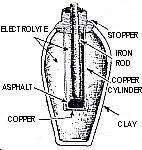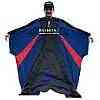Famous Inventors

T'sai Lun invented paper and the process for making paper in 105 A.D in China. He mixed plant fibers in water.
The pulp was then drained with a rag, pressed into a sheet on a bamboo framed mat, and left to dry in the sun. When dried the sheet became paper.
Paper was discovered using biometrics, a study of nature for solutions to complex or simple problems.
 Lun observed wasps building their nests with pulp from fibrous materials. Wasps would chew various fibers and macerate the mixture with their saliva into a pulp.
Lun observed wasps building their nests with pulp from fibrous materials. Wasps would chew various fibers and macerate the mixture with their saliva into a pulp.
The secret to making paper was selecting plants that had abundant long cellulose fibers that could be easily broken down into fine pulp.
Lun produced a high quality paper using pulp from mulberry tree bark and bamboo fibers.
Similar to silk making, paper making was a closely guarded secret by the Chinese. The technology wasn't known outside of China until 600 A.D. when it was revealed to Korea and Japan around 600 A.D.
The Tang Dynasty expanded their territory westward in a series of military conquests but was eventually halted by the Arabs in the Battle of Talas River in 750 A.D.
During that battle, the victorious Arabs had captured paper makers and thus discovered the secrets to making paper, which was subsequently introduced to the West.
While the Egyptians had used papyrus for writing and inscription, it wasn't paper and wasn't made from the paper process invented by the Chinese.
Sources: ipst.gatech.edu;io9.com
Baghdad Battery
 Alessandro Volta is credited with inventing the first battery.
Alessandro Volta is credited with inventing the first battery.
He discovered that he could produce a current by placing dissimilar metals in a chemical solution.
In other words, to generate a current you need two metals that have different electro potentials and an ion solution (electrolyte) for the electrons to travel between the metals.
In appreciation of his discovery the potential of a current is commemorated in Volta's name - volt.
But was Volta really the first person to discover the battery or was he the first person to reinvent it for public knowledge?
In 1938, artifacts dating back almost 2000 years to Mesopotamia were discovered in an Iraqi museum.
These artifacts were clay jars containing copper cylinders with iron rods that were isolated from the cylinders and held in place by stoppers.
Filling one of these jars with wine, vinegar, lemon or grape juice would generate a current between the copper and iron electrodes. Hence the name Baghdad battery.
 Replicas of these batteries have been built and tested and most experts agree that the jars can create electric current.
Replicas of these batteries have been built and tested and most experts agree that the jars can create electric current.
In an experiment conducted by Adam Savage of MythBuster fame, a series of Baghdad batteries generated 4 volts of electricity.
But if these ancient artifacts were in fact workable batteries, then why didn't we know about this technology?
Skeptics argue that although the jars could be used as batteries - they weren't. If so, the discovery of the jars would have included wires.
Dr. Chaddock of the British Museum believes that the jars were designed to store and protect scrolls. But no scrolls were discovered with the jars.
However, it's not unusual for inventions that are created for one purpose to be found later to have another. For example, gunpowder was invented as a remedy for indigestion and later discovered to be a great explosive.
But it didn't take 2000 years for this alternative use to be realized.
Some scientists believe that the Baghdad batteries may have been used for electroplating. Electroplating uses the battery process of transferring electrons from one metal to another to coat copper, bronze or other metals with a thin layer of gold or silver.
This process was a variant to plating which used heat and pressure to fuse metals together. An electroplating technology would have been a closely guarded secret similar to the secrets of making silk, paper, crystal or mirrors.
A technology that could easily and inexpensively coat any metal with gold or silver would have created immense wealth for it's owners.
In fact, electroplating wasn't "officially" discovered until 1805, when Luigi Brugnatelli, who worked with Volta, discovered the process.
Even then, public knowledge of the process was kept secret by the scientific community - allegedly at the behest of Emperor Napoleon Bonaparte.
This suppression kept electroplating a secret for another forty years.
We may never know the truth about the Baghdad batteries but if they were a secret - it may explain the mystery behind them.
Sources: io9.com;news.bbc.co.uk;.artisanplating.com


|
| Man flies over Grand Canyon with jet engines on his back. |

|
| Man jumps from helicopter without parachute and glides to ground using his new suit. |



